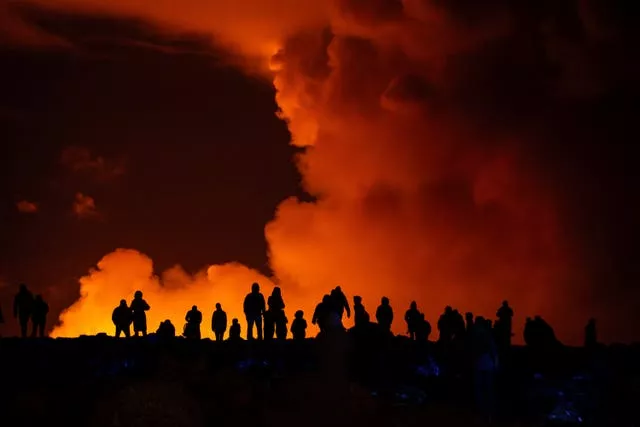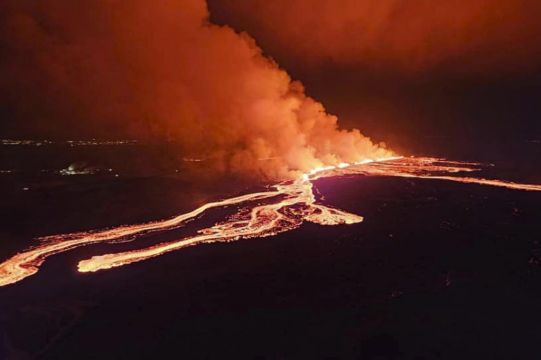Lava from a volcanic eruption in Iceland is continuing to flow towards defences around the town of Grindavik, which have so far held the molten rock back from the evacuated community.
Scientists said on Sunday that the eruption appears to be weakening and will probably peter out within hours.
A volcanic system on the Reykjanes Peninsula in the country’s south-west erupted late on Saturday for the fourth time in three months, sending orange jets of lava into the night sky.
Iceland’s Meteorological Office said the eruption opened a fissure in the earth about two miles long between the mountains of Stora-Skogfell and Hagafell.
It said on Sunday that lava is flowing south and south-east at about 0.6mph, and might reach the sea. Defensive barriers have been built to stop it inundating the main road along the peninsula’s southern coast.
Hundreds of people were evacuated from the Blue Lagoon thermal spa, one of Iceland’s top tourist attractions, when the eruption began, national broadcaster RUV said.

No flight disruption was reported at nearby Keflavik, Iceland’s main airport.
The eruption site is a few miles north-east of Grindavik, a coastal town of 3,800 people about 30 miles south-west of the capital, Reykjavik.
Our facilities are temporarily closed due to a volcanic eruption. Please visit our website for further updates and information. pic.twitter.com/oBVsJrU5jD
— Blue Lagoon Iceland (@BlueLagoonIS) March 16, 2024
The town was evacuated before the initial eruption on December 18th, and a second eruption that began on January 14th sent lava towards the town. Defensive walls that had been bolstered after the first eruption stopped some of the flow, but several buildings were consumed by the lava.
Both eruptions lasted only a matter of days. A third eruption began on February 8th and ended within hours, but not before a river of lava engulfed a pipeline, cutting off heat and hot water to thousands of people.
Iceland, which sits above a volcanic hotspot in the North Atlantic, sees regular eruptions and is highly experienced at dealing with them. The most disruptive in recent times was the 2010 eruption of the Eyjafjallajokull volcano, which spewed huge clouds of ash into the atmosphere and led to widespread airspace closures over Europe.







